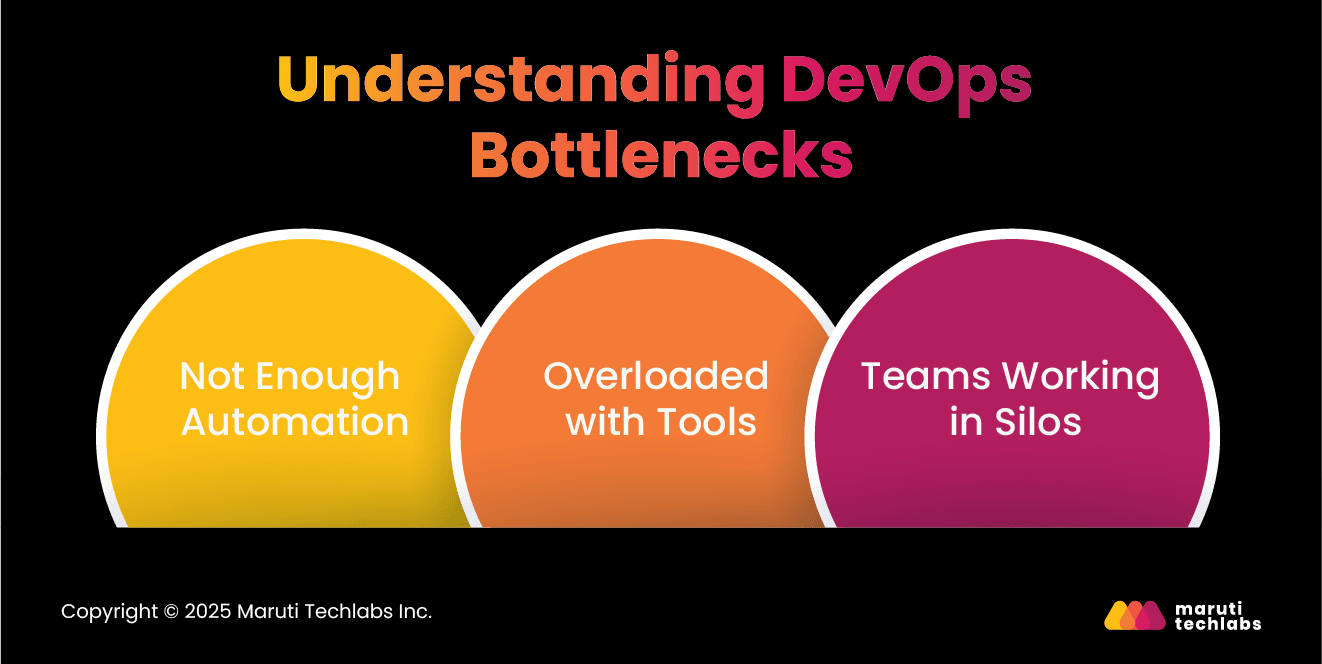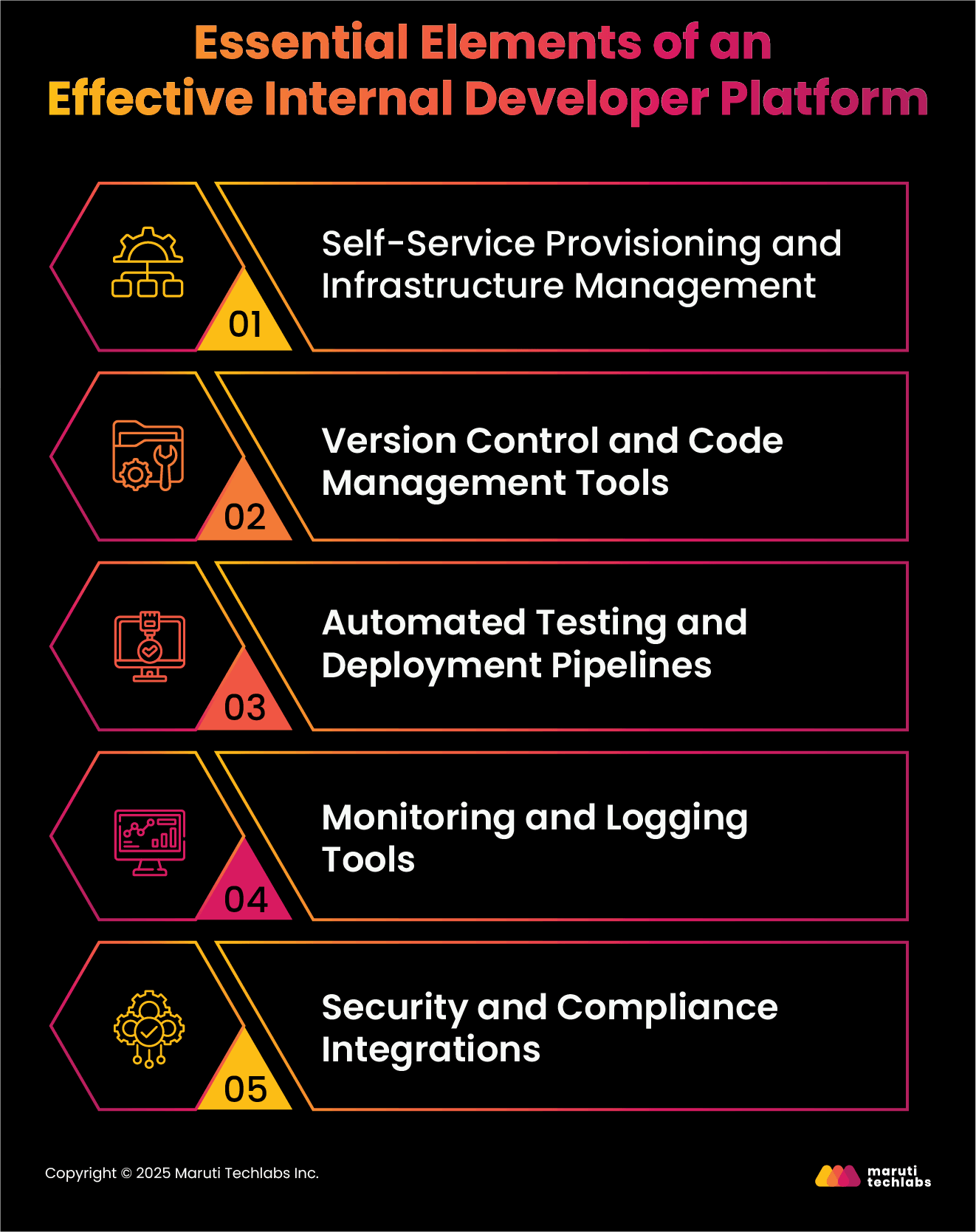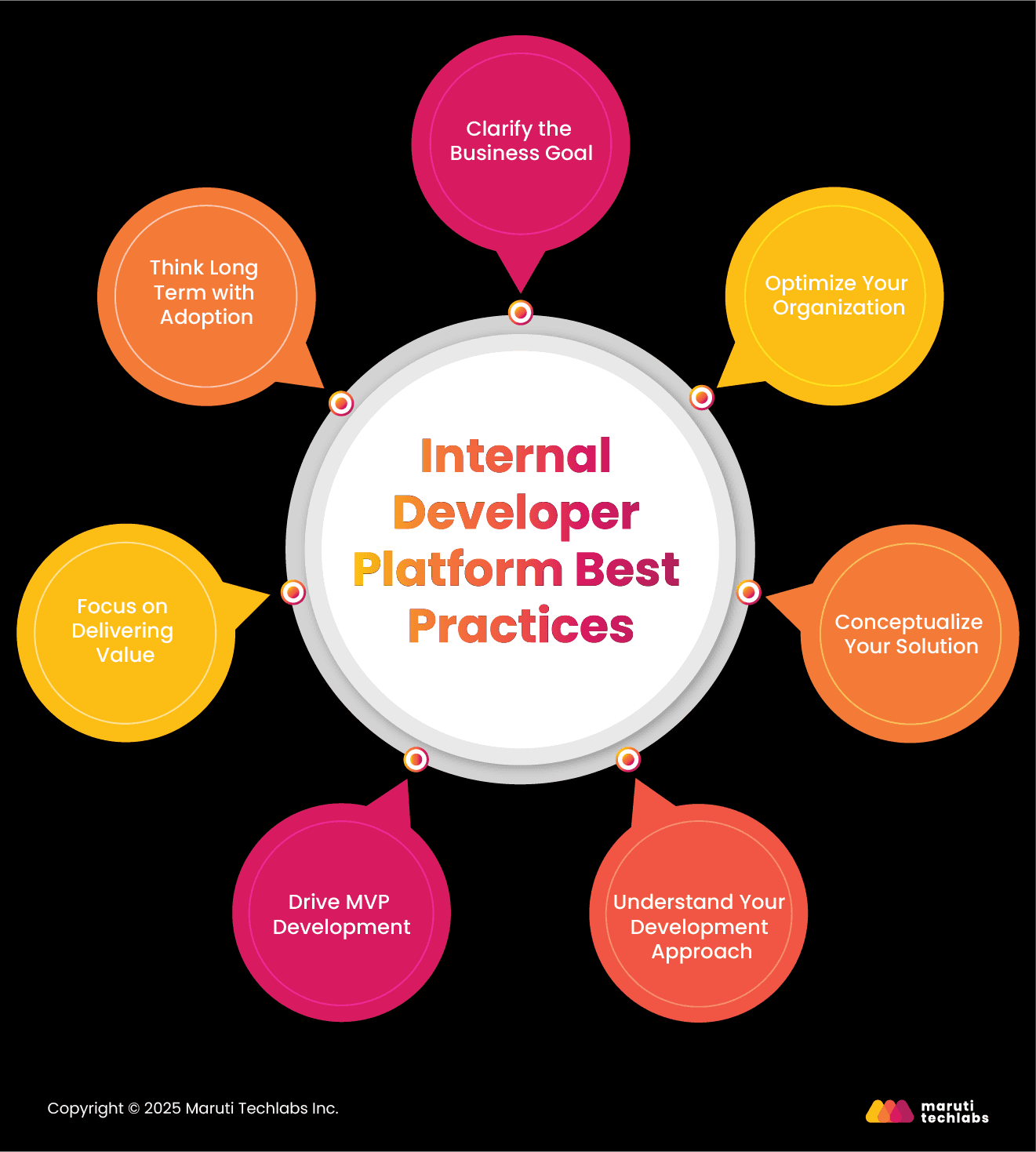

How to reduce DevOps Bottlenecks with Internal Developer Platforms






One of the biggest challenges that DevOps engineers face is not the lack of automation, CI/CD pipelines, or Kubernetes—it is spending a lot of time managing complex infrastructure instead of focusing on coding. This slows down development and makes it hard for teams to deliver software on time. This results in less productivity; and DevOps loses the speed and flexibility it should provide.
Internal Developer Platforms (IDPs) offer a way to streamline workflows and reduce friction. By providing a centralized set of tools, services, and automation, IDPs enable developers to work more efficiently without needing deep knowledge of infrastructure. This self-service approach abstracts complexity, allowing teams to focus on delivering high-quality software faster.
In this blog, we'll explore DevOps bottlenecks, the key features of an effective IDP, best practices for implementation, and whether to build or buy an IDP for your DevOps strategy.
DevOps is supposed to make software development faster and easier, but some problems get in the way. Many teams don't have enough automation, use too many tools, or don't work well together. These issues slow things down, add extra work, and make it harder to finish projects on time. Because of this, productivity drops, and DevOps doesn't work as well as it should.

Automation is a big part of DevOps, but only 56% of processes are actually automated. Teams still spend time on manual approvals, security checks, and troubleshooting, which slows everything down. These delays make it harder to scale and meet customer needs. Without enough automation, teams fall behind, and bottlenecks pile up.
The DevOps ecosystem is packed with tools designed for a specific purpose. While they offer great features, juggling multiple tools creates complexity. Teams spend more time managing integrations and troubleshooting compatibility issues than automating workflows. This slows down development and makes it harder to maintain a smooth pipeline.
DevOps is all about teamwork, but many teams still work independently. Developers, operations, and security teams don't always share what they're doing. This causes confusion, extra work, and delays in fixing problems. Without better teamwork, DevOps can't be as fast or flexible as it should be.
Selecting the right Internal Developer Platform (IDP) is essential for streamlining the development process and enhancing productivity. A well-structured IDP simplifies workflows, minimizes bottlenecks, and accelerates software delivery. Here are five key elements that make an IDP effective:

A good IDP lets developers set up and manage infrastructure on their own without waiting for IT or platform engineers. They can quickly choose and deploy servers, databases, and operating systems through a simple self-service portal. This speeds up the development process and gives teams more control over their work.
Integrating with version control systems like Git or Subversion, an IDP enables developers to track code changes, collaborate seamlessly, and revert to previous versions when needed. This improves code quality, enhances teamwork, and simplifies troubleshooting. With a structured version control system, teams can maintain consistency and efficiency in code management.
A well-designed IDP takes care of testing and deployment so developers don't have to do it manually. With built-in CI/CD tools, they can set up workflows that automatically run tests and push updates whenever code changes. This saves time, reduces errors, and ensures every release is smooth and reliable.
Developers need visibility into how their software is performing, and a good IDP makes it easier. With real-time monitoring and logging, developers can quickly spot issues, troubleshoot faster, and stabilize applications. This results in fewer disruptions and more reliable software.
Security is an important part of any IDP. It should help developers protect code, manage sensitive data, and control access. Features like security scanning, secret management, and user permissions keep applications secure. Compliance tools also make sure that companies meet industry regulations and avoid risks.
An IDP with these essential features not only enhances developer productivity but also strengthens software quality and security, making the development lifecycle more efficient and reliable.
Building an Internal Developer Platform (IDP) isn't just about technical skills. It also requires careful planning and the right approach. Here are some best practices to ensure your IDP delivers real value:

Before building an Internal Developer Platform (IDP), explain why your organization needs it. A well-defined goal helps everyone stay on the same page and work toward the right outcome. Without it, the platform can lose direction and fail to be useful. Keep the goal simple and clear so it guides every step of the process.
An IDP should fit naturally into the way your development team works. Before building it, take time to understand how your teams communicate and collaborate. Conway's Law says that software reflects the structure of the team that creates it—so if there are existing issues, an IDP won't fix them on its own. Solve those challenges first to ensure the platform blends smoothly into daily workflows and helps your team be more productive.
Once you have a clear goal and the right team in place, you can design your IDP. Focus on the key features, tools, and applications it needs to support. The platform should be simple and easy to use, not something that makes developers work harder. A well-designed IDP brings everything together, makes processes smoother, and keeps workflows consistent—so teams can easily adopt and use it daily.
Decide if you want to build an IDP from scratch, buy one, or customize an open-source option. The right choice depends on how much flexibility you need. A tool like Wardley Mapping can help you figure out if customization is worth it. Building your own might be best if you need full control and specific features. For a faster solution, buying or customizing open-source software can save time.
Start with a simple version of the IDP that gives developers real value while leaving room for improvements. There will be challenges along the way, so keeping the team motivated is important. Remind them why the platform matters and how it will help in the long run. Staying focused on the bigger goal will keep things moving forward, even when setbacks happen.
An IDP should make a developer's job easier. Start by understanding what teams need—faster automation, better storage, or smoother workflows. Building around these needs is actually helpful. Set clear steps to stay on track and improve over time. When it solves real problems, developers will want to use it.
The best IDP can also face pushback from developers who are used to their current workflows. Change takes time and support. Listen to feedback, see what works, and improve it. With clear communication and small updates, the IDP can become a useful tool that makes work easier.
By following these best practices, organizations can build an IDP that not only meets immediate needs but also scales effectively to support long-term success.
Deciding whether to build or buy an Internal Developer Platform (IDP) is a big choice that depends on your team’s resources, skills, and business goals.
Building an IDP from scratch is time-consuming and requires money and a large team. It can take over three years and over 100 engineers with specialized skills. If your company has the budget, technical expertise, and patience, a custom-built IDP can perfectly fit your needs, improving efficiency and streamlining development.
However, not every organization has the resources to complete such a massive project. Building an IDP could take focus away from core business goals if your team is small or already stretched thin. In this case, buying an IDP or using an IDP-as-a-service is a faster, more cost-effective option. These solutions improve productivity without needing a large team, but they may require adjusting existing workflows or replacing older tools.
The right choice comes down to what your organization needs most—full customization or quick implementation. Weigh your resources, long-term goals, and digital transformation timeline to decide which approach will help you reduce DevOps bottlenecks and move forward efficiently.
Reducing DevOps bottlenecks is crucial for faster, more efficient software delivery. Internal Developer Platforms (IDPs) help automate infrastructure tasks, enforce security policies, and streamline workflows. Instead of developers manually setting up cloud resources, access controls, or deployments, an IDP ensures these processes follow standardized workflows, saving time and reducing errors.
For businesses looking to stay competitive, adopting an IDP can be a game-changer. Whether you build or buy, having the right platform helps teams focus on development rather than infrastructure management.
If you’re exploring IDP solutions, Maruti Techlabs can help. Our DevOps experts design and implement platforms that simplify infrastructure, improve security, and enhance developer productivity. Explore our DevOps consulting services here.
Building an IDP gives you full control over the development process. It means creating a central platform tailored to your team’s needs, but it requires expertise in different technologies.
For examples:
An IDP connects different tools and technologies to create a smooth development workflow. It reduces complexity and lets developers work independently. The platform team builds and improves the IDP by gathering feedback from developers, operations, security, and leadership. This ensures it benefits everyone, from infrastructure teams to executives.
DevOps is a way of working that focuses on collaboration and automation, while an IDP is a tool that supports DevOps by giving developers a structured platform to build, test, and deploy software efficiently. Companies use both to speed up development and improve workflows.
An IDP gives developers a single place to access the tools and services they need for coding, testing, and deployment. It simplifies workflows, removes bottlenecks, and ensures consistency, making development faster and smoother.
An IDP helps developers manage the entire software lifecycle, from writing code to deployment. It automates routine tasks, enforces best practices, and ensures consistency across teams. With a self-service portal, developers can access everything they need without waiting on operations teams.


